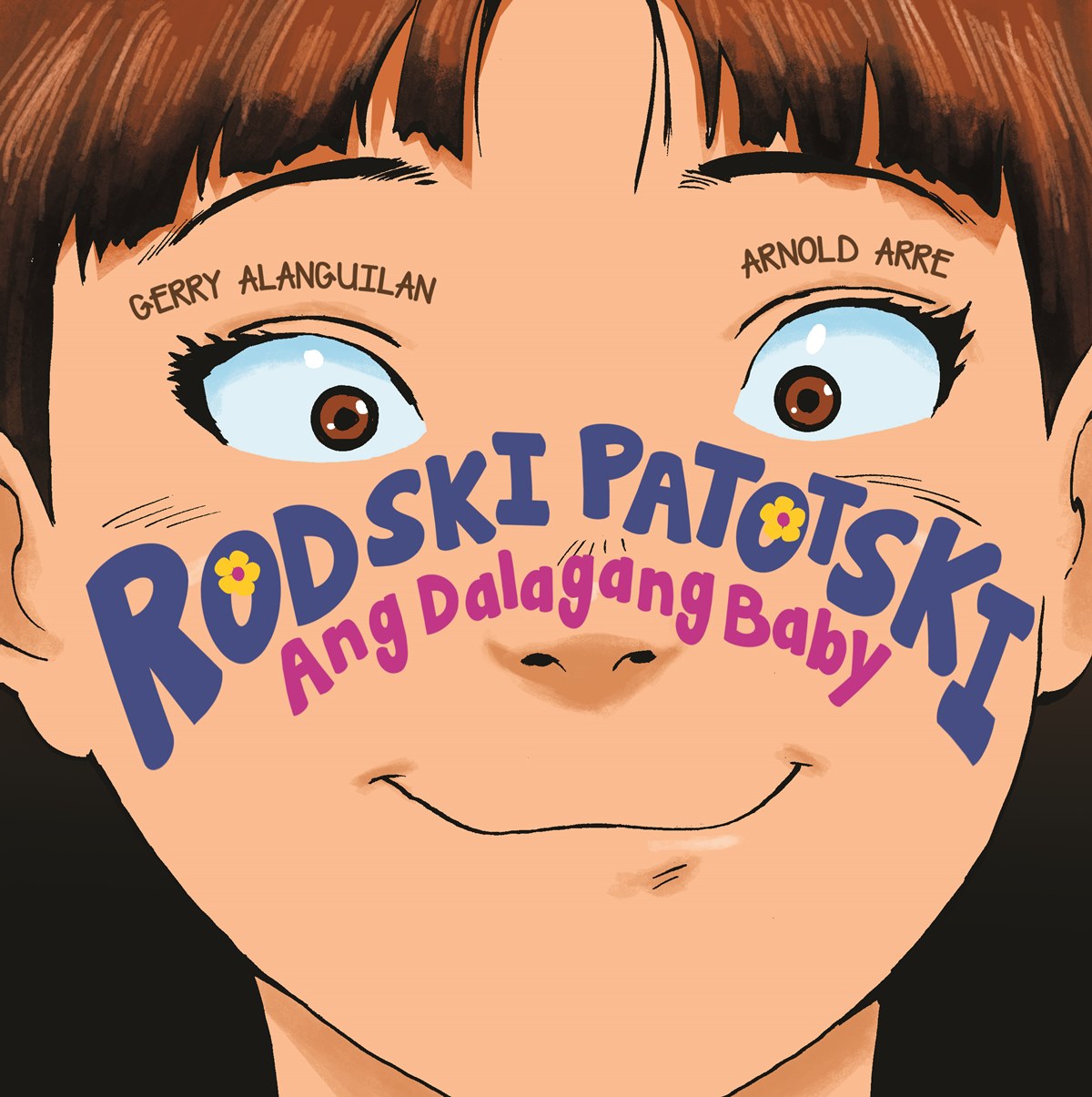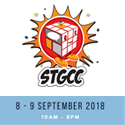LET’S TALK KOMIKS: Arnold Arre on Komiks & Storytelling
Celebrated Filipino storyteller and komiks creator Arnold Arre (Halina Filipina, After Eden, The Mythology Class) recently held a small workshop entitled Kwentong Pilipino as a part of UP Graphic Arts in Literature (GRAIL)‘s anniversary celebration, where he talked about Filipino stories and how to become a good storyteller. We caught up with the brilliant writer and artist afterwards to ask him about his thoughts on creating stories and the local komiks scene nowadays.
This Let’s Talk Komiks.
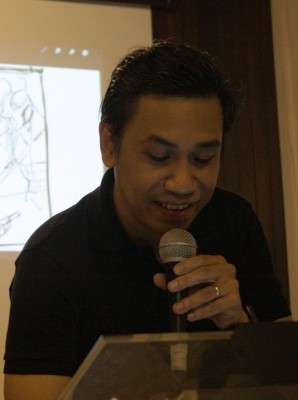
FLIPGEEKS: First things first, do you think there is a formula for good storytelling?
ARNOLD ARRE: It’s hard to give tips kasi they [writers and artists] have different styles. You can give them basics but I don’t think there is a formula. You can call the basics a formula for when they’re still starting but it’s hard to be specific.
Do you have a distinct style when you write your stories?
I’m not sure. You know, style is from the audience – they tell you “your style is this”. I’m so used to my work. It’s hard to describe your own work but I could say I write stories that are character based. [They] focus more on the interaction between characters. I think all of my stories are like that.
You mentioned earlier that you’re huge fan of anime and manga. Do you have any favorites when it comes to artists, writers, or series?
Akira introduced me to anime. I suggest you start with that.
What about TV series or movies?
Actually right now I’m watching mostly Japanese drama. Densha Otoko [Train Man]! I loved that movie.
Aside from writing and illustrating, you’ve also done some animating work already. Is it different when you use other mediums outside of comics?
Not so much, like I said earlier there’s a connection between film and comic books. The difference is now you can actually see them moving. With animation I feel like I’m free, like the character can do anything I want. With comics kasi you have to create that illusion of movement but in animation it’s there. Animation taught me how to be patient. I draw fast kasi and I’m very impatient, [but in animation] if you make a mistake you have to redraw everything.
[CHECK OUT… REVIEW: Fall in love again with Arnold Arre’s ‘After Eden’]
How did you develop yourself as a storyteller? Looking back, what do you think has changed or how have you grown since you first began?
I just released After Eden. I was a different person when I wrote After Eden. And then now, I released the 2016 version [and] ang dami kong binago. It’s more mature now. I guess I can say… I think I can tackle other topics now. Before kasi it was all action-adventure like with Mythology Class but Martial Law Babies was more of a drama [already]. I’m still learning.
You said always try to keep learning and practicing. How else do you improve?
Just keep learning. I’m glad I got into animation . Now I’m learning new things about figure drawing [and] action movement sequences. Kasi you improve eh. If someone says “now I’ve learned everything I can”, that’s when they fall. They don’t grow na eh, they don’t evolve. That’s sayang. I wanna keep growing and evolving.
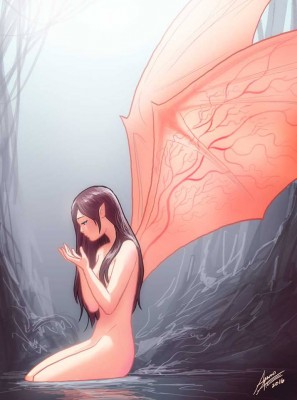
Next graphic novel by Arnold Arre is BUSILAK. Coming out in 2016.
Could you walk us through your creative process?
It starts with an idea or an experience that I had and I wanna share with people. If there’s an experience I had and I still remember the emotion, I wanna translate it [into a] story so people can understand me. Like with Martial Law Babies, I wanted to understand my generation and what we contributed. Mythology Class is based on college friends. I wrote [it] because I missed my friends from UP Fine Arts. [In] Halina Filipina, I was trying to tackle the issue of who’s more patriotic – those living here or those living abroad. Because when I met my cousins from the States they were very proud to be pinoy, pinoy na pinoy talaga.
Earlier in your talk, you mentioned the danger of dragging scenes and stories. How can you tell if a scene is too dragging?
When [a scene] is dragging that’s a sign that the writer may not know where to put the information, so it becomes an info dump where people are just talking and talking . That, or when you can’t present the information creatively. If you’re gonna have a scene where everyone’s talking and talking, you can write the dialogue well or you can make it interesting. When it becomes dragging kasi the authors or filmmakers might not know how to move the story along. Ako, my technique is, if you’re gonna do a talkie [scene], something must be happening kahit sa background. [They could be] in a train, or the writer could try to give more information about the characters. It’s a good time to learn more about the characters.
[CHECK OUT… Kwentong Pilipino: ARNOLD ARRE on Komiks and Filipino Stories]
You also said that comics are primarily a visual medium that can hold its own without dialogue. Any plans to make a silent comic?
I, well, yeah. Actually, [si] Manix Abrera, ang galing ng works niya eh. Perfect example. He knows how to tell stories and create drama without words. That’s hard to do eh. Ako, I’ll probably do something short. [Because] mostly graphic novels and characterization ako eh so I like making them talk.
In one of your examples in the workshop, you showed us how “it’s all in the eyes.” Do you have any tips for developing skills when it comes to eyes and emotions in the face.
I guess… Watch Disney films. Or anime. It’s like a shorthand na for emotion. [With] the way they’re drawn, you know the emotion already. You can learn a lot from those.
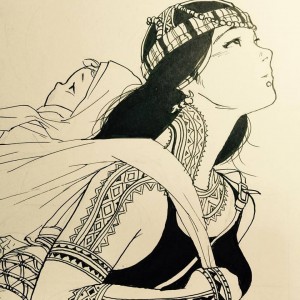
Panel art for BUSILAK.
Another piece of advice you gave is to make stories believable. They don’t necessarily have to be realistic.
Realistic is boring. You need to believe that what the reader or audience is witnessing is really happening and to do that, you need to create characters that they can latch onto. The moment they don’t believe in the characters, they’re gonna pinpoint mistakes – “ah mali ito, mali ito.” You need to make them ride along with you.
You said that in order to achieve believability, storytellers have to be good liars. Are you?
All writers [are] naman eh. That’s the term eh, storyteller. I guess “liar” is too harsh. Siguro more romantic is… dreamweaver?
What are your thoughts on local komiks nowadays?
I’m very happy with how it’s going. There are a lot of new artists that are really really good, better than nung time ko. Yun lang, they need to discipline themselves, I think. I collect [their] comic books and I want them to finish their story arcs so I know what’s happening. It’s so sad when they have 5 issues and then you don’t know what’s gonna happen – probably never. So I keep telling them “please release.” But there are a lot of good writers and artists. You just need to be professional about releasing [komiks] and schedules.
When you mentioned that you wish people would finish their stories, may personal hugot ba? Are you waiting on any comics that have yet to be released?
Ah sobrang dami, I forgot na eh. But I always [ask] them when the next release will be. Some of them say “next komikon balik ka“, some don’t. It’s kinda sad. Money is hard to come by. But I think it’s even harder if you don’t know how to finish your work. Kasi not only are you not getting any money, you’re also not satisfied kasi we’ll never finish the story and your readers will feel bad. So yeah it’s important.
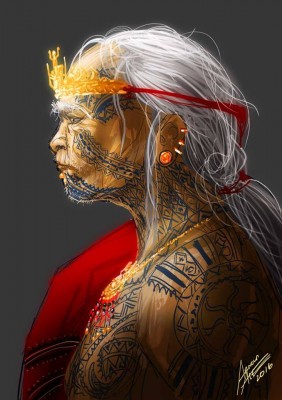
Are there any komiks that you have recently read or are currently reading?
Well, I collect yung mga independents. I try to collect those that aren’t close to what I’m writing. Kasi I’m writing a book right now on Philippine mythology, so I try to avoid those types until I release them. With my other books, it’s easier since not a lot of writers make comics about Filipino-Americans or modern generations.
[CHECK OUT… GRAPHIC NOVEL REVIEW: Halina Filipina]
What about you? Any upcoming works?
Ah yeah, I posted [it as] my Facebook cover. It’s high fantasy. It’s [about] Philippine mythology again but it’s not connected to Mythology Class, it’s different.
Finally, do you have any advice for today’s aspiring storytellers?
I would say.. Promote our culture. Yun nalang eh. Even if your style is anime, it should be easy. Create characters we can relate to. Promote our culture. And that’s interesting kasi if you send [your work] to editors abroad, they’re gonna notice. Japanese editors don’t wanna see their culture done by other people because they already know about it. But if you send them a story about the Philippines, parang “wow.” Suddenly they’re seeing the Philippines through the eyes of a manga-style artist, and that’s different.





